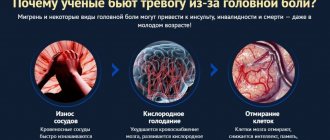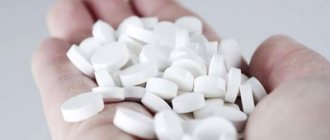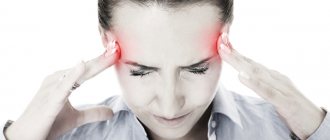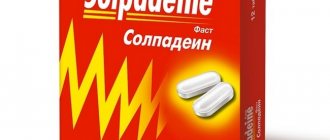High blood pressure, a problem that everyone has heard of. But low blood pressure also occurs quite often, even in young people. If with hypertension everything is more or less clear, there is a clear gradation of numbers, then with hypotension it is not possible to focus only on numbers. One person feels great with a blood pressure of 90/60, but feels unwell when the pressure rises to 120/60. Another person with low blood pressure feels weak and lacks strength.
What it is
Reduced blood pressure is considered to be less than 100/60 mmHg. Art. Sometimes this may be physiological hypotension, which does not cause deterioration in well-being. Such individual characteristics can be caused by heredity and a person’s physique. They are also found among residents of high mountain regions, tropics, and athletes. A person usually finds out about this by accident and has no complaints1.
If low blood pressure is accompanied by symptoms of malaise, we can talk about pathology. Often, episodes of low blood pressure begin in childhood and adolescence as manifestations of neurocirculatory dystonia. Then they become regular and can develop into chronic arterial hypotension2.
If arterial hypotension is a consequence of other diseases, it is necessary to carry out treatment aimed at these problems. What can cause low blood pressure:
- anemia;
- chronic diarrhea;
- severe varicose veins, which leads to retention of a large volume of blood in the lower extremities;
- consequences of taking diuretics, antihypertensive drugs, barbiturates, antidepressants;
- adrenal insufficiency;
- tonsillitis;
- gastritis, peptic ulcer;
- diseases of the liver and biliary tract;
- heart diseases.
There are many reasons, so a medical examination and examination is required to establish the correct diagnosis.
Sometimes such an unusual combination of hypotension in an upright position with hypertension in a supine position is detected. Since blood pressure is usually measured while sitting, hypertension may not be detected immediately.
To establish a correct diagnosis, a medical examination and examination is required.
Causes of pressure, nausea, headache
Acute headaches, nausea, weakness and deterioration in health, as well as various heart rhythm disturbances are symptoms that may indicate both high and low blood pressure. Normally, this figure is 120/80 mm. rt. Art., but in some people it remains at a higher or lower level. When measuring it, various factors are taken into account, but chronic hypertension or hypotension cannot be considered normal.
High blood pressure
Hypertension is an increase in blood pressure. It often occurs in a chronic form and can be diagnosed at any age. Blood pressure indicators with constant hypertension remain within the range of 140∕90 mm or more. rt. Art. Doctors recommend exercising with caution if you have this disease, avoiding stress, and regularly measuring your blood pressure at home.
Causes of hypertension
The main cause of hypertension is weakness of blood vessels and decreased elasticity of their walls. With a sharp increase in blood pressure, they cannot adapt to the load. This can happen in the warm season, during physical activity, under stress and nervous tension. In addition, chronic hypertension can be diagnosed, which manifests itself in both adults and children. Its causes may be:
- congenital or acquired diseases of the heart and blood vessels;
- excess weight, which increases the load on the heart muscle;
- abnormal physical activity;
- age-related changes - in older people, blood vessels become less strong and elastic, and adapt less well to pressure changes;
- unhealthy diet, as well as frequent alcohol consumption;
- atherosclerosis is a chronic metabolic disease in which plaques and blood clots (often cholesterol) form on the inner wall of the arteries.
Attacks of hypertension can be associated with stressful situations, in which blood pressure increases and the heartbeat accelerates. Thus, severe fear causes a sharp increase in blood pressure, accompanied by pain in the heart area. Symptoms also often occur during intense physical activity, especially at high temperatures and insufficient ventilation.
Symptoms of high blood pressure
More than 20% of people in the world suffer from chronic hypertension. The danger of this disease is that at the first stage it can be asymptomatic. The clinical picture is noticeable during the next attack, but during periods of remission the disease does not manifest itself in any way. When blood pressure increases, the patient experiences the following symptoms:
- acute headache, dizziness;
- nausea and vomiting, regardless of food intake;
- acceleration of heart rate, manifestation of various types of arrhythmia;
- redness of the skin in certain areas, often on the face;
- the appearance of small subcutaneous hemorrhages - they are associated with rupture of capillaries from increased blood pressure and can also be found on the mucous membranes;
- deterioration of hearing and vision, the appearance of black dots or circles in the field of vision;
- fainting is possible.
The first symptoms of hypertension may remain unnoticed, but the load on the heart increases significantly. If you do not take this feature into account and continue to undergo intense physical activity, this can lead to dangerous consequences. A sharp increase in pressure is the main cause of vascular rupture and the development of hemorrhagic stroke with hemorrhage in the brain. Doctors at the Clinical Brain Institute recommend regularly measuring blood pressure at home, even if there are no prerequisites for this. This simple procedure will allow you to recognize hypertension in the early stages and prevent dangerous consequences.
Lower blood pressure
Hypotension (low blood pressure) is an equally dangerous disorder. With this disease, blood does not move through the vessels intensively enough and does not reach areas distant from the heart. Thus, the blood supply to the lower arms and legs, internal organs and brain may be disrupted. It is important to monitor your health and take prescribed medications, since low blood pressure can cause ischemic stroke.
Causes of hypotension
Hypotension is diagnosed if, as a result of several measurements, blood pressure readings are 90∕60 mm. rt. Art. and less. It can be a chronic disease of the cardiovascular system and can also occur in healthy individuals under certain conditions. So, the causes of hypotension can be:
- deterioration of vascular tone, their constant expansion - the result of poisoning, allergic reactions and other disorders;
- vegetative-vascular dystonia is a disease in which the regulation of vascular tone occurs, so their walls lose tone and elasticity;
- dehydration of the body due to insufficient fluid intake, especially in the heat, in case of poisoning or during sports – leads to a decrease in the volume of circulating blood;
- congenital and acquired diseases and heart defects, valve failure;
- systemic use of certain medications, including drugs against hypertension, which lead to a persistent decrease in blood pressure.
Separately, physiological hypotension is distinguished - a decrease in blood pressure, which is within normal limits. Thus, indicators may be underestimated as a compensatory response to environmental conditions. Residents of high mountain regions experience a mild degree of chronic hypotension, which is not harmful to health. It also develops in athletes who regularly engage in intense physical activity. An increase in the mass and volume of the heart and an increase in the volume of circulating blood lead to the fact that for proper blood circulation in normal mode, a low blood pressure is sufficient. In some healthy people, blood pressure is constantly slightly reduced, and this is considered normal. In other cases, hypotension is a pathology and requires timely treatment.
Symptoms of low blood pressure
Hypotension can be asymptomatic only with a slight decrease in pressure. If the indicators are 90∕60 mm. rt. Art. and less, the clinical picture is clearly expressed. The disease manifests itself in attacks that sharply worsen health and can lead to fainting. The onset of an attack can be determined by the characteristic symptoms:
- aching headache that can spread over the entire surface of the head or pulsate in the temples;
- constant weakness, drowsiness, slow reaction to stimuli;
- pallor of the skin and mucous membranes, with a sharp decrease in pressure to critical levels, their cyanosis may be observed;
- decrease in skin temperature on the distal parts of the extremities (hands and feet) due to their insufficient blood supply;
- nausea and vomiting;
- tendency to faint when the ambient temperature rises, during physical exertion, while dieting, and in other cases.
If you often have a headache and feel sick, and your blood pressure is constantly below the normal limit, you should consult a doctor for a more complete diagnosis. Hypotension is dangerous to health, since the rate of blood circulation in this disease is significantly reduced. The main risk is insufficient oxygen and nutrients to the brain cells, which causes fainting. Ischemic areas form in the brain tissue, which cannot function fully. Persistent hypotension can lead to the development of ischemic stroke - an acute disorder of cerebral circulation. This condition poses a threat to the patient’s life, so it is important to take care to prevent its occurrence.
Other reasons
Nausea, weakness, high or low blood pressure, and headache are symptoms of a number of diseases caused by circulatory failure. They pose varying degrees of danger to the patient, but equally require full diagnosis and proper treatment. It is difficult to recognize the disease and make a correct diagnosis at home. In addition, many dangerous pathologies in the initial stages are disguised as ordinary malaise and fatigue.
- Poisoning is a condition in which toxic substances enter the body or are formed as a result of metabolism. Food intoxication is the most common; poisoning with gases, alcohol and medications, and heavy metals is also identified. They are manifested by nausea and vomiting, decreased blood pressure due to dehydration, as well as acute headaches.
- Heart defects can be congenital or acquired. They represent insufficiency of the heart valve apparatus. This leads to a deterioration in the movement of blood through the vessels, insufficient blood supply to internal organs, and an increased risk of myocardial infarction.
- Atherosclerosis is a chronic metabolic disorder in which the walls of blood vessels become dense and inelastic. Plaques and blood clots form on their inner wall, preventing normal blood flow. Often the cause of atherosclerosis is a violation of cholesterol metabolism, and this element is deposited on the walls of blood vessels and in the internal organs.
Blood pressure, nausea, headache - these symptoms may indicate severe fatigue, nervous tension, and stress. They can also appear in a healthy person, especially during sudden changes in weather conditions. Also, this picture may be a sign of poor nutrition, a lack of certain vitamins and minerals in the diet.
Symptoms of hypotension
The symptoms that occur are usually caused by a lack of blood supply to the brain and heart. Here are typical manifestations1:
- headache;
- dizziness, imbalance;
- nausea;
- severe weakness;
- memory impairment;
- decreased performance;
- intolerance to bright light, harsh sounds, stuffiness.
Deterioration in health is accompanied by pain in the heart, rapid or slow heartbeat, and rhythm disturbances.
As soon as such a person gets out of bed in the morning and starts walking, he feels worse due to an even greater decrease in blood pressure, so he wants to go back to bed. Additional symptoms:
- coldness and impaired sensitivity of the extremities (fingers);
- symptoms worsen due to fatigue, stress, lack of sleep, acute infections and exacerbation of any chronic diseases.
AD: what is it
The pressure created by blood on the walls of blood vessels is one of the indicators of the vital functions of the body.
It is determined by two main parameters:
- the volume of blood that the heart pumps over a certain period of time;
- vascular resistance.
Anatomy of the cardiovascular system
The generally accepted norm for this indicator is 120/80 mmHg. Art.
The top number is systolic blood pressure, which develops in the arteries at the time of systole (contraction) of the heart muscle. The lower one is diastolic blood pressure, reflecting the pressure on the vascular walls at the moment of myocardial relaxation.
Blood pressure directly depends on the work of the heart
Note! In addition to SBP and DBP, in medicine it is customary to distinguish pulse pressure, which is the difference between these indicators. Normally it is 35-55 mm Hg. Art.
Do you know how to measure blood pressure?
Even in a healthy person, blood pressure can fluctuate slightly.
It depends on:
- mood and psychological state in general;
- time of day;
- foods and drinks consumed;
- level of physical activity.
When stressed, catecholamines are released into the blood, which constrict blood vessels and increase blood pressure.
If there are any problems in the body, changes in blood pressure can be significant. Can low blood pressure cause nausea? And what symptoms can high blood pressure provoke: weakness + dizziness, etc.? Let's look at it in more detail in the sections below.
Important! It is advisable to determine what the pressure is as early as possible: if you feel nauseous, have complaints of headache and dizziness, are worried about sudden weakness, tinnitus, flashing spots before your eyes.
How to raise blood pressure
Oddly enough, drinking coffee and tea in the morning is not recommended, but it is better to avoid it altogether. The desire to get a “charge of vigor” in the morning first becomes a habit, and then turns into doping and requires a constant increase in the dose1.
Moderate loads with a smooth increase in duration have a positive effect. For example, walking, exercise bike, gentle jogging, skiing, swimming.
Static loads with a forced posture (working at a computer), tilting the head, lifting heavy objects are best avoided. If it is impossible to alternate them with physical activity.
In the morning, you need to learn to get up slowly so as not to cause a drop in blood pressure. Compression stockings on your legs may also help. It will reduce the amount of blood in the veins of the lower extremities. For training, you can sleep with the head of the bed elevated.
It is better to avoid static loads with a forced posture
Decreased blood pressure
Patients often develop hypotension, or low blood pressure: dizziness + nausea, weakness, drowsiness are the main clinical signs of this condition.
It is generally accepted that it develops when blood pressure reaches the following values:
- less than 100/60 mm Hg. Art. - for men;
- less than 95/65 mm Hg. Art. - for women.
Tonometer readings (pictured) are below normal
This is interesting. According to statistics, low blood pressure is detected in 4% of the world's population. However, not in all cases it is a sign of health problems. Medicine knows many cases of so-called physiological hypotension, in which a person feels great and does not complain about his health.
Causes and mechanism of development
You cannot envy people with a pathological decrease in blood pressure.
Among the factors that provoke this disease, scientists identify:
- hereditary predisposition (more often in women with low weight and asthenic physique);
- prolonged stress, psycho-emotional stress;
- prolonged mental work;
- physical inactivity;
- unfavorable working conditions;
- starvation;
- chronic anemia;
- intoxication;
- severe allergic reactions;
- injuries accompanied by brain damage;
- acute pancreatitis;
- cirrhosis of the liver;
- endocrine disorders (hypofunction of the thyroid gland, hypoglycemia due to improper treatment of diabetes, etc.).
Hypotension is usually the lot of thin girls
It is interesting that doctors often determine low blood pressure in athletes. In this case, the decrease in heart rate and blood pressure is compensatory in nature (the body is accustomed to the economical consumption of oxygen and nutrients), and the condition is called “hypotension of high fitness.”
Sometimes blood pressure is below normal in athletes
The pathogenesis of the syndrome involves the higher cortical centers and the pituitary gland. If normal regulation from the “center” is disrupted, the vessels do not contract as necessary, but remain dilated.
Classification
Regardless of what symptoms low blood pressure causes - nausea, dizziness, weakness, etc., hypotension occurs:
- Acute - develops suddenly with severe heart damage, shock, massive bleeding, severe intoxication.
- Chronic – continues for a long time, divided into: Physiological (see above);
- Primary – occurs as an independent disease;
- Secondary – complicates the course of other pathologies.
In shock conditions, hypotension is acute
Symptoms
Most patients with hypotension complain that they feel dizzy + nauseous: low blood pressure may also have other symptoms. However, all of them are associated with insufficient blood supply to organs, primarily “strategically important” ones - the brain and heart muscle.
Compensatory mechanisms for insufficient supply of O2 molecules to peripheral tissues
Table 1: Clinical manifestations of hypotension:
| System | Symptoms |
| Nervous |
|
| Cardiovascular |
|
| Digestive |
|
Are you familiar with these symptoms?
Headache, dizziness and low blood pressure are the most common companions. The pain can last for several days, is dull in nature, and is provoked by mental stress, noise, and bright light.
They are caused by rapidly developing hypoxia of brain tissue. If the patient's hypotension is chronic, changes in cognitive functions (thinking, cognition, memory) are possible.
Long-term headaches can be very debilitating
Low blood pressure often provokes weakness and asthenic syndrome. Many patients note a deterioration in their health during sudden changes in weather, during magnetic storms.
Manifestations of weather sensitivity
Another unpleasant symptom that low blood pressure causes is nausea + diarrhea. They can be either a consequence of circulatory disorders of the gastrointestinal tract or have a central genesis. Your doctor can tell you why you feel sick at low blood pressure and what to do about it.
The combinations of “low temperature + low blood pressure + weakness” or “low blood pressure + cramps + weakness” can be very dangerous. In most cases, they indicate serious problems in the body and require medical attention.
In critical situations, medical assistance will be required
Why is hypotension dangerous?
As we have already found out, a pathological decrease in blood pressure can be a manifestation of one of the serious illnesses (shock, internal bleeding, serious injuries). In this case, it carries a mortal danger.
In the case of autonomic reactions, when low blood pressure + vomiting + dizziness have no other causes, the prognosis for the patient is more favorable.
However, the pathology is fraught with the development of:
- sudden fainting;
- decrease in memory and general capacity of the brain for stress;
- impaired coordination of movements;
- progressive visual impairment;
- interruptions in heart function.
A sharp decrease in blood pressure can be complicated by fainting
Therapy methods
If hypotension is secondary, to normalize blood pressure it is necessary to eliminate its cause - the underlying disease.
What to do in case of primary hypotension, in which the patient has low blood pressure and feels sick due to vegetative-vascular dystonia? Most patients can help themselves without leaving home.
Standard medical instructions require compliance with the following rules:
- Avoid sudden movements, bends, and turns. Do not jump out of bed immediately after waking up - the blood vessels will not have time to adapt to the changed position of the body, and orthostatic collapse will occur. Try to do everything slowly and smoothly.
- Do not attend noisy parties accompanied by illumination and loud music. Most likely they will cause you another attack of headaches and insomnia.
- Avoid alcohol. Most strong drinks dilate blood vessels.
- Natural coffee will help you feel cheerful and active. However, you should not exceed the permissible limit - 3-4 cups per day. In addition, do not forget to maintain a normal fluid balance and drink enough clean, still water.
- A day's rest (20-30 minutes in a horizontal position) will allow you to return to work with renewed vigor.
- A contrast shower and exercises will give you a feeling of vigor in the morning. The procedures will not only help you wake up, but also improve blood circulation.
Start your day right
Important! Even if you feel slightly weak, you should not spend the whole day lying on the couch. An active lifestyle and regular physical activity have a positive effect on the circulatory system and improve the supply of oxygen and nutrients to organs.
Physiotherapeutic procedures
- Cryochamber.
- Rubbing with warm water with a gradual decrease in temperature to 10-15*C.
- Charcot/rain/circular shower.
- Turpentine, carbon dioxide, mineral baths.
- Other tonic effects.
It is most convenient to receive a set of procedures during sanatorium-resort treatment. This allows you to take your mind off the stress of everyday life, normalize your sleep and diet. Walking and a good emotional background will make an important contribution to the healing process.
Drugs
To normalize tone, it is possible to take adaptogens in courses1:
- Eleutherococcus;
- ginseng;
- Aralia;
- pantocrine;
- lemongrass
If arterial hypotension is a consequence of other diseases, it is necessary to carry out treatment aimed at these problems.
In case of adrenal insufficiency, lifelong replacement therapy may be prescribed. Depending on the type of violation, the following is used:
- glucocorticoids (cortef);
- mineralocorticoids (cortineff).
A special case and difficulty for the doctor and the patient is the combination of arterial hypotension and hypertension. Since the treatment methods are radically opposite, choosing the right treatment method is not easy.
In any case, the prescription and correction of treatment should be made by a doctor. At the same time, success in treatment cannot be achieved without the patient’s efforts.








